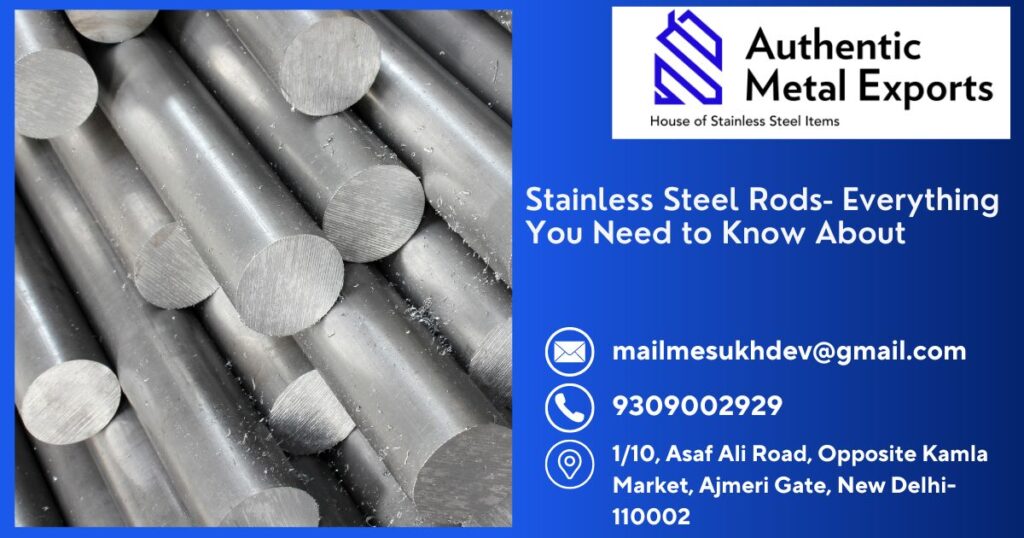The textile industry is one of the oldest and largest industries in the world, providing a wide range of products such as clothing, household textiles, and industrial textiles.
The industry has undergone significant changes over the years, with advancements in technology and materials playing a vital role in its growth and development.
One of the most significant materials that have transformed the textile industry is stainless steel.
In the following sections, we will explore the different applications of stainless steel in the textile industry and how it has contributed to its growth and development.
A thin, undetectable coating of chromium oxide is created on the surface of stainless steel as a result of chromium’s reaction with oxygen. This layer is what gives stainless steel its excellent corrosion resistance properties, as it prevents further oxidation and rusting of the metal.
Stainless steel is also alloyed with other metals such as nickel, molybdenum, and titanium to enhance its properties. The addition of these metals improves the strength, durability, and toughness of the stainless steel.
Stainless steel has several properties that make it an excellent material for use in the textile industry. These properties include:
• Hygiene and cleanliness
The use of stainless steel in the textile industry has several advantages, including:
Stainless steel is a durable material that can withstand harsh conditions and environments. It is resistant to corrosion, abrasion, and wear, making it an excellent material for textile machinery and components.
Stainless steel’s excellent corrosion resistance properties make it an ideal material for use in the textile industry. Textile manufacturing involves the use of water, chemicals, and heat, which can cause corrosion and rusting of the machinery and components.
Excellent mechanical qualities of stainless steel include strength, toughness, and ductility.. These properties make it an ideal material for use in textile machinery and components, as they can withstand the stresses and strains of the manufacturing process.
Stainless steel is easy to clean and maintain, making it a hygienic material for use in the textile industry. The smooth surface of stainless steel prevents the accumulation of dirt and bacteria, reducing the risk of contamination in the manufacturing process.
Stainless steel is a sustainable material that can be recycled and reused, making it an environmentally friendly option for the textile industry. Its long lifespan also reduces the need for replacement, minimizing waste and reducing the industry’s carbon footprint.
Stainless steel is used in various applications in the textile industry, including machinery and components.
Stainless steel is used in spinning machinery such as spinning frames, ring frames, and open-end spinning machines.
Stainless steel is also used in weaving machinery such as looms and jacquards. The reed and heddle wires in these machines are made of stainless steel, as they can withstand the stresses and strains of the weaving process.
Knitting machinery such as circular knitting machines and flat knitting machines also use stainless steel components such as needles, sinkers, and transfer jacks. Stainless steel’s durability and strength ensure that these components can withstand the high speeds and pressures of the knitting process.
Dyeing machinery such as jet dyeing machines and jiggers also use stainless steel components such as rollers, guides, and nozzles. Stainless steel’s corrosion resistance properties ensure that these components can withstand the harsh chemicals used in the dyeing process.
Finishing machinery such as stenters and calenders also use stainless steel components such as rollers and guide rails.
Circular and flat knitting machines both use stainless steel needles as part of their technology..
The needles’ high strength and corrosion resistance ensure that they can withstand the stresses and strains of the knitting process.
Pins made of stainless steel are used in weaving machinery such as looms and jacquards.
The pins’ corrosion resistance ensures that they can withstand the harsh chemicals used in the weaving process.
Rollers made of stainless steel are used in various textile machinery such as spinning frames, dyeing machines, and finishing machines.
Stainless steel’s durability and strength ensure that these rollers can withstand the stresses and strains of the manufacturing process.
Guides made of stainless steel are used in dyeing machinery and finishing machinery.
The guides’ corrosion resistance ensures that they can withstand the harsh chemicals and high temperatures used in the dyeing and finishing processes.
Belts made of stainless steel are used in various textile machinery such as spinning frames and weaving machines.
Stainless steel’s durability and strength ensure that these belts can withstand the high speeds and pressures of the manufacturing process.
Proper maintenance and care of stainless steel machinery and components are crucial to ensure their longevity and performance.
Regular cleaning and lubrication of the machinery and components can help prevent corrosion and rusting.
Using appropriate cleaning solutions and avoiding abrasive materials can also help maintain the smooth surface of the stainless steel and prevent the accumulation of dirt and bacteria.
Stainless steel machinery and components play a critical role in the textile industry, providing durability, strength, corrosion resistance, and hygienic properties.
The use of stainless steel in textile machinery and components ensures that the manufacturing process can withstand the stresses and strains of the industry, while also minimizing the risk of contamination.
Additionally, the sustainability of stainless steel makes it an environmentally friendly option for the textile industry.







Pingback: Industrial Applications Of Stainless Steel: Benefits And Advantages |